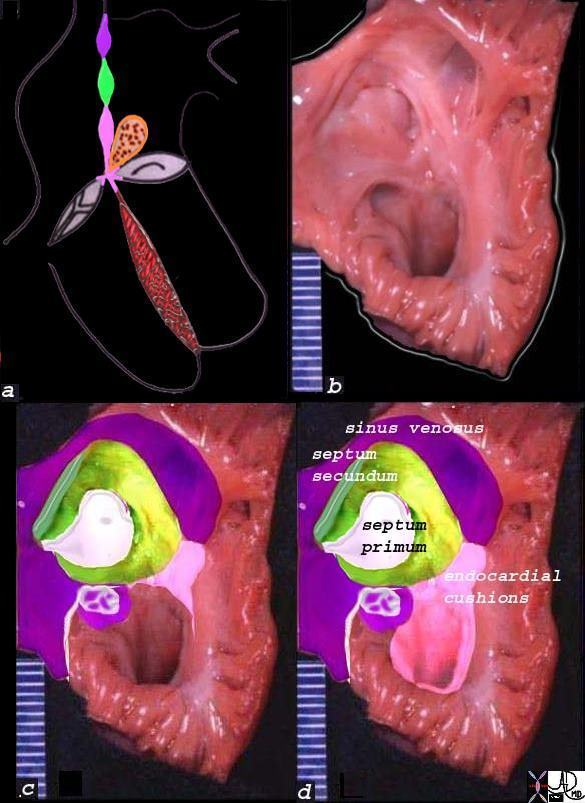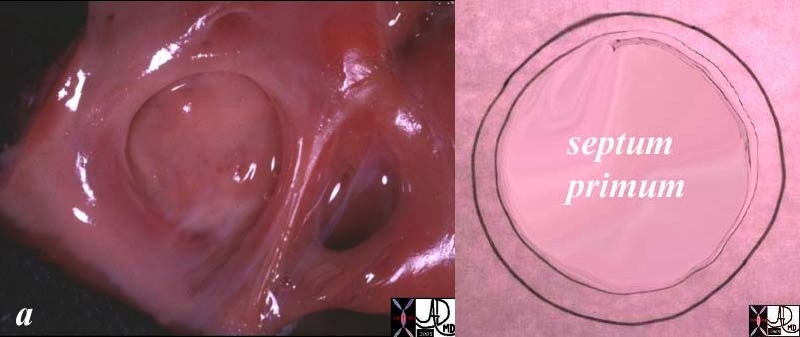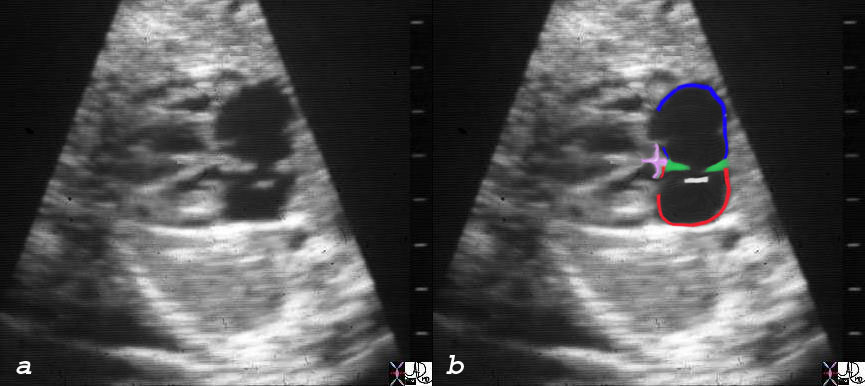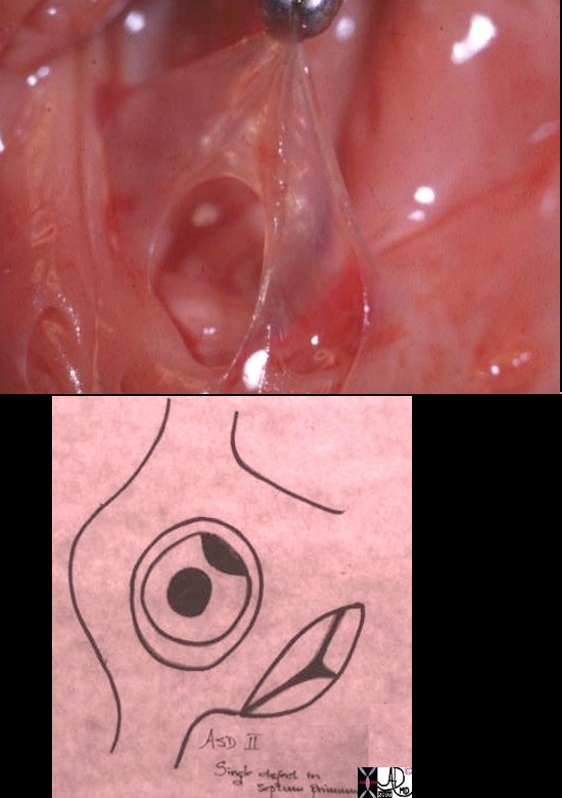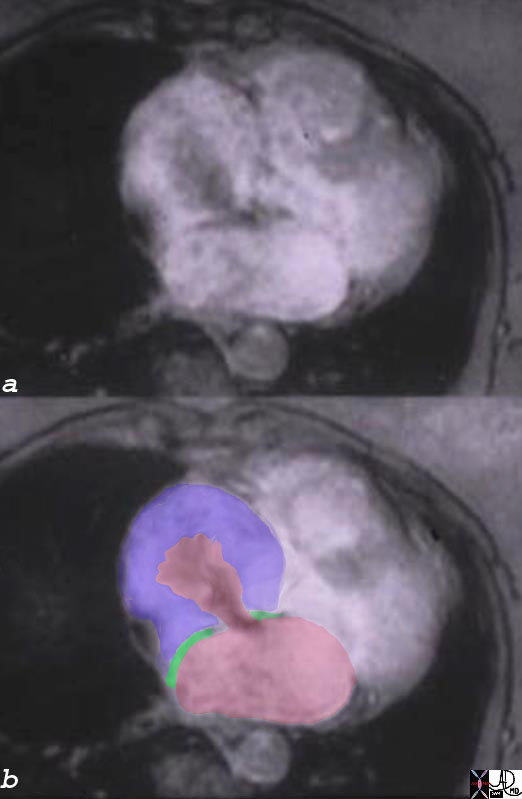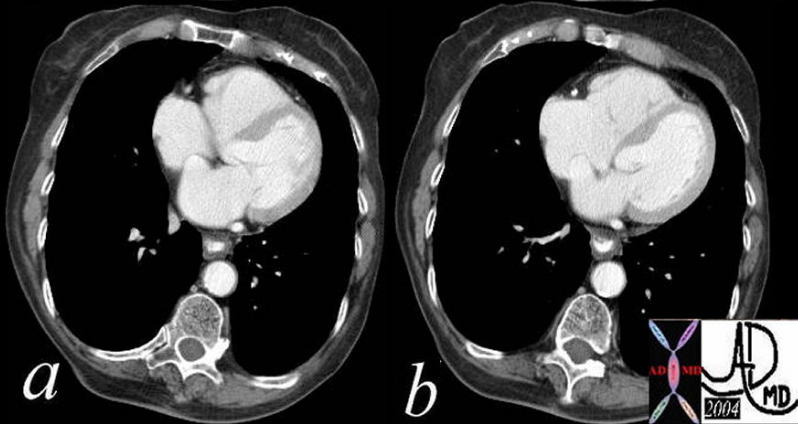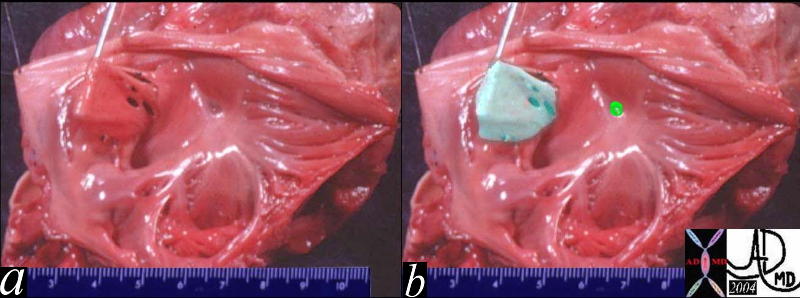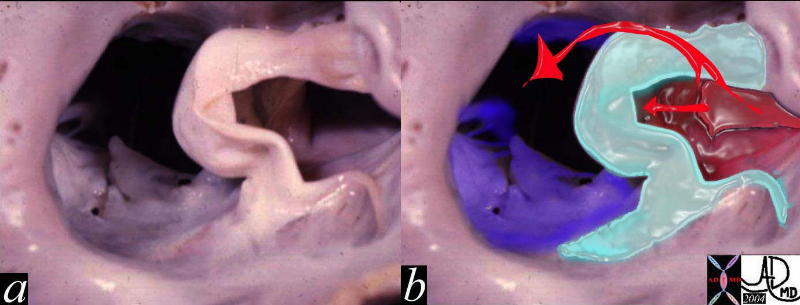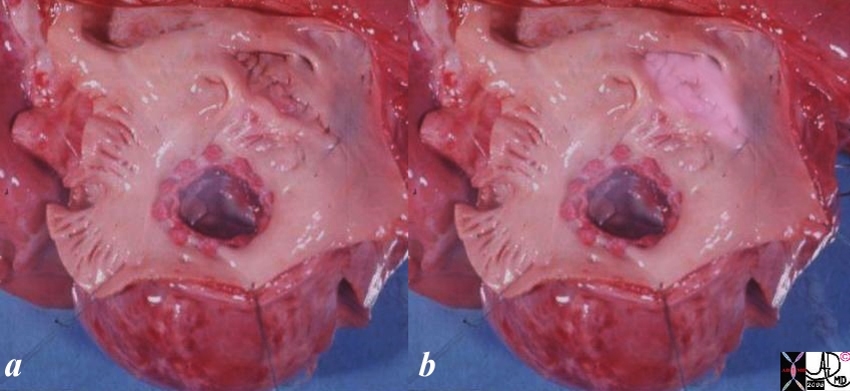The Common Vein Copyright 2008
Definition
The septum primum is a fibrous membrane that is characterized by its central position in the atrial septum, and its central role in shunting nutrient rich maternal blood from the right sided circulation into the left, to enable structures like the brain to receive the nutrients. imaging
Structurally it is characterized by its fibrous nature, its central position surrounded by the septum secundum, and the oval shaped defect in the its superior portion. The defect called the foramen ovale, is the conduit for blood that is shunted from the right atrium to left atrium that occurs in the fetus. When one examines the septum primum from the left atrium, the defect is seen as “u” shaped. Superiorly the septum primum lies on the left atrial side of the septum and overlaps the septum secundum in the region so that it can act as a valve. (see diagram below labelled “flap valve”)
Functionally the flap valve is open to flow when right atrial pressure is higher than left, (fetal condition) and it is closed when left atrial pressure is higher (post natal condition). During fetal life the right to left shunting is essential for systemic flow of blood since the pulmonary circulation offers high resistance and thus there is little flow to the lungs and therefore little flow returning to the systemic arterial circulation. The lungs are non functioning in the fetus and hence the arteries are constricted, and hence the high resistance. This situation changes with the first breath of air at birth.
Diseases of the fossa ovalis are almost exclusively related to diseases of the septum primum, and include ASD of the secundum type and patent foramen ovale.
Diagnostic elements relate to these diseases and include the clinical evaluation for an atrial septal defect (systolic murmur, split fixed P2, right ventricular enlargment, and pulmonary hypertension later in life) EKG showing enlarged RV, and echocardiography that can document defects in the fossa ovalis.
Treatment is usually surgical.

01669b04 heart cardiac embryology conal septum line drawing right atrium left atrium left ventricle right ventricle interatrial septum interventricular septum atrioventricular septum crux aortic annulus aorta of the heart embryology anatomy
Davidoff drawing Davidoff MD
01667b04 01667b04 01667b06 01667b07 01667b09 01667b14 01669b03
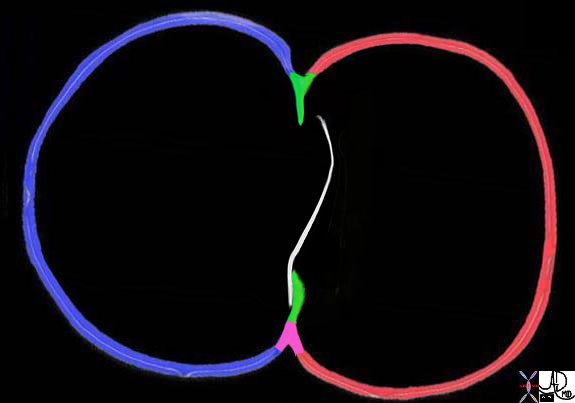
Davidoff art copyright 2008 all rights reserved


